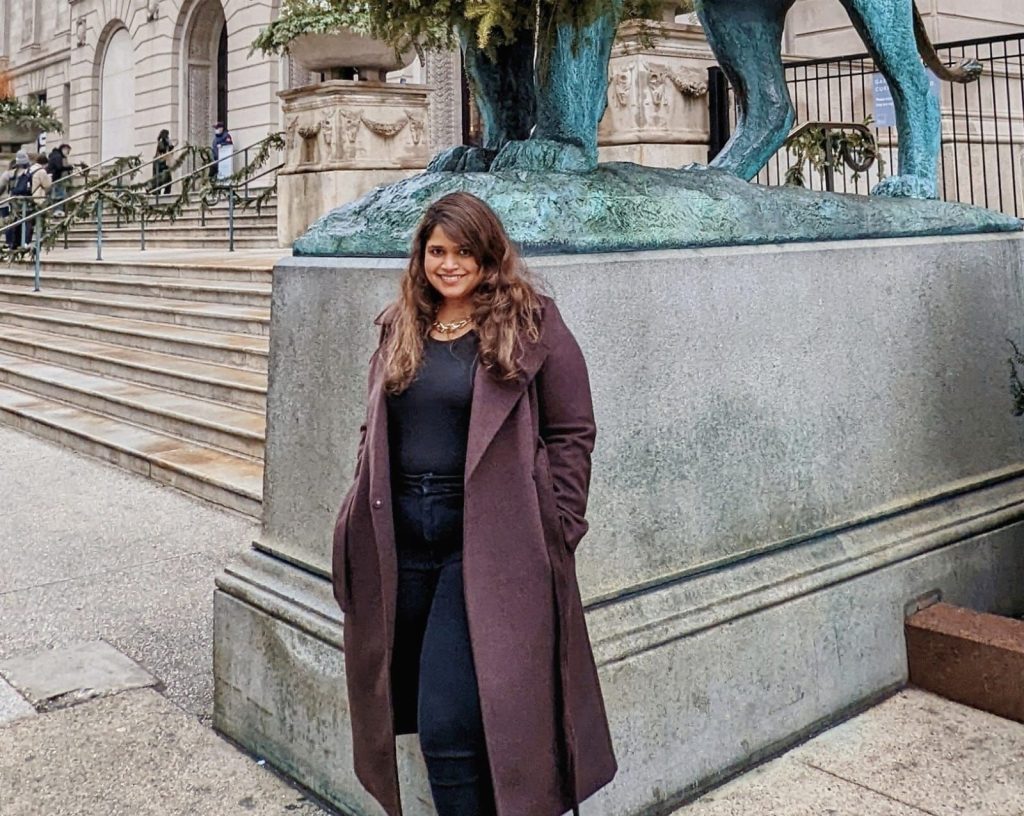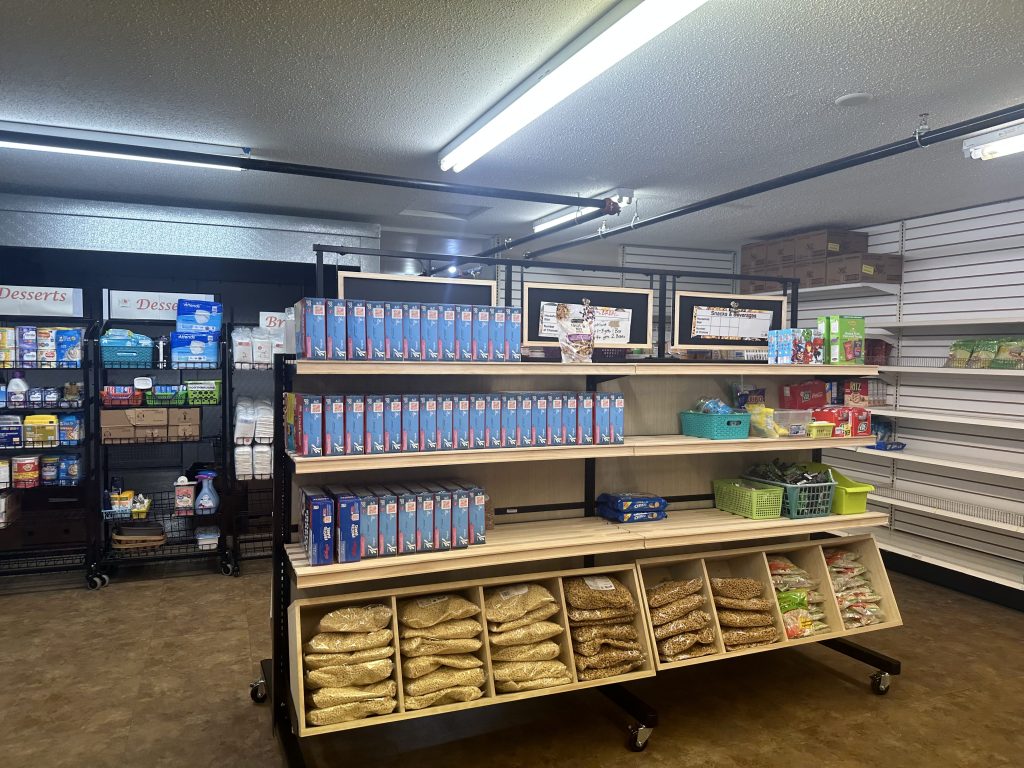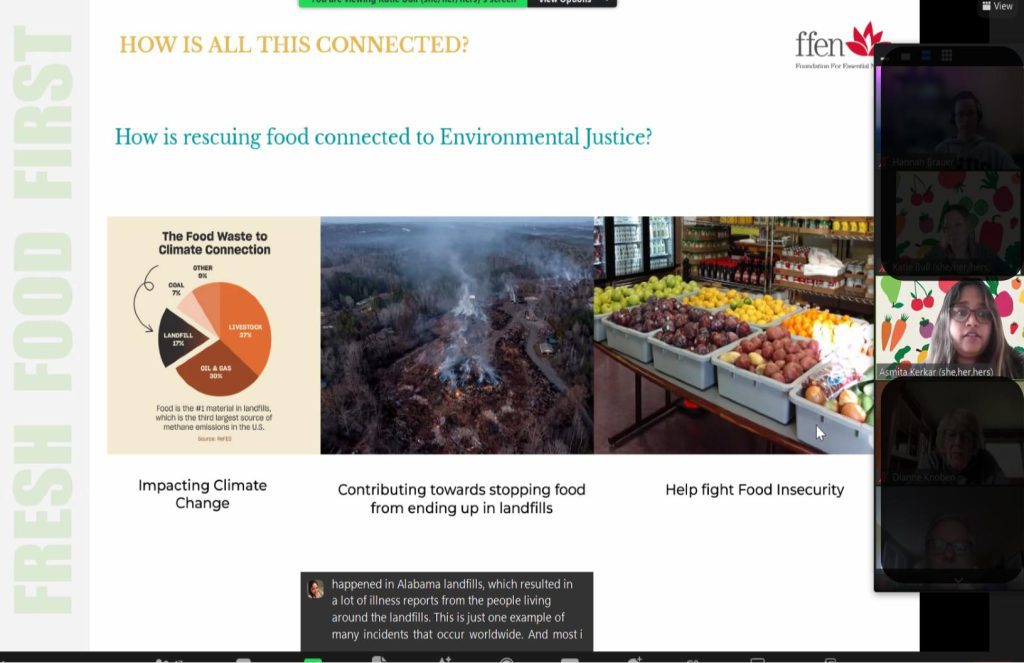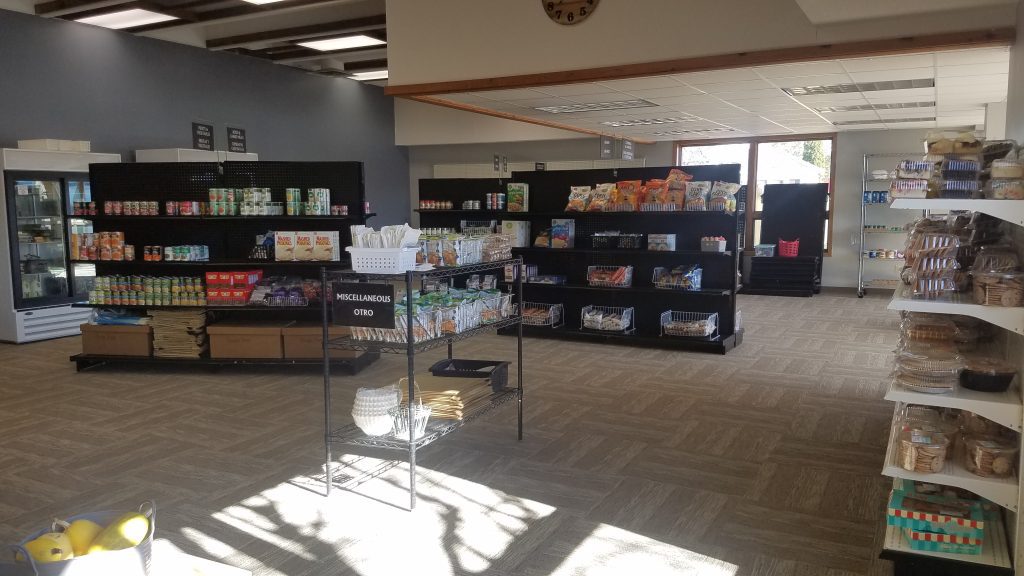(January 10, 2023) Bernice Wimmer has been trying everything to fight the hunger crisis in the city of Alexandria in Minnesota, and was looking for support in redesigning her outreach food shelf (a point where families shop for the rescued food) to help improve shopping flow and focus on fresh food. Keen for a solution, she was still resisting the change. However, a meeting with Asmita Kerkar, the layout designer with the Foundation for Essential Needs (FFEN), changed it all as she helped create dignified shopping experiences for people facing food insecurity. “Having someone experienced, who knows space design and the psychology behind it, was a gift,” Bernice said. In the three years that Asmita has worked with FFEN, she has helped improve the turnout at almost seven food shelves in Minnesota through design psychology, helping create a safe platform for community engagement.

Asmita Kerkar
“Food insecurity is huge in the US,” Asmita tells Global Indian. Almost 34 million people in the US are food insecure, a statistic that shocked her. “I had no idea that the hunger crisis was acute in the US. We have around 400 food shelves in Minnesota, out of which over 250 have consulted with FFEN at some point.” Working with a nonprofit that’s helping Minnesota fight the hunger crisis by managing food shelves in the state, Asmita realised design psychology is most needed by these people as they have a stigma of shame to shop from the food shelves. “Coming from low-income families, they are unable to put food on the table every day, and are in a dilemma about choosing to pay the rent or medical bills or using the money to buy food, ” says Asmita, adding, “These people get food through donations which happen mostly in spatial experiences that feel unwelcoming due to lack of choice. But what FFEN or we as spatial designers are trying to do is create a grocery store environment for these people but without exchange of money and the freedom to pick and choose.”
Understanding that a space can have an impact on people’s psychology, Asmita started bringing more colours to the food shelves by collaborating with artists. “Certain colours can uplift your mood. Moreover, signage plays a pivotal role as language is important. We work around environmental graphics like ‘Take As Much As You Need’ instead of ‘Limited to 5LBS’ making the experience welcoming to them.” Even changing linear aisles to diagonal has helped improve the shopping experience of people at food shelves.

Outreach food shelf
Architecture to design psychology – shifting gears
Fashion designing was Belgaum-born Asmita’s first choice but an incident made her shift gear in her career choice. Seeing a beautiful heritage home being torn down in the neighbourhood “broke her heart.” This prompted her to read more about architecture and its history and led her to sit for The National Association of Students of Architecture exam. “Though I wasn’t good at sketching, my dad and my teacher believed in me and encouraged me to follow my dream.” After bagging a seat in Bachelor of Architecture, Asmita had an epiphany that it was the correlation between spaces and human psychology that intrigued her more than the exterior of the building.
After graduating, she took up freelancing projects for interior design leading to an interest in spatial experience design, which intensified after arriving in the US for her master’s in environmental design at the ArtCenter College of Design. Learning the psychology of spaces opened up a new horizon for Asmita, and her class on Design Matters nudged her toward designing for social impact. “During my thesis, I started volunteering with FFEN as a layout designer and introduced them to the psychology of design and spaces and its impact. Seeing the feedback pushed me to look for opportunities in nonprofit,” says the spatial designer, who initially worked with a corporate as sustaining on a nonprofit as an international student wasn’t feasible. “However, I kept volunteering with FFEN.”

Designing for social impact
Opportunity knocked on her door when FFEN approached her to work as a design strategist after receiving a part of the $147,000 grant from the Minnesota Pollution Control Agency to design Fresh Food First – food rescue toolkits to help preserve the freshness of the rescued food. “Food makes 18% of landfills in Minnesota where it breaks down and produces methane, impacting climate change. I wanted food shelves to know why it was important to save the rescued food so that it doesn’t land up in landfills,” she adds. Most of the rescued food comes from farmers, family donations, food drives, restaurants, and few grocery stores like Trader Joe’s. “All the donated food goes to a food bank that distributes it to the food shelves. It’s again dependent on supply and demand.”

So, what are the toolkits that Asmita has created? “It’s mostly guidebooks or graphical posters. In the food shelves, there is a scarcity mindset. Since the supply isn’t enough, you don’t have enough to showcase. How do you display less produce in a way that people think it’s more? You use a tilted basket and pile up everything at an eye level. We try to design such small things that play with the mind of the person rather than their reality which you cannot change.” Moreover, the toolkits create awareness in case of food shelves displaying food in wrong equipment. “Most display onions and potatoes together but are unaware that they produce ethylene gas which leads to the darkening of potatoes. Providing a list of ethylene-sensitive and ethylene producers list, helps them stock the produce in a better way. Another aspect is recycling food. Up to 2-3 weeks expired baby food can be consumed by baby animals on the farms,” explains Asmita.

McLeod Food shelf in Minnesota
This month her team will pilot the project in seven-ten food shelves. Over the years, Asmita’s work has helped create an inclusive and dignified space for people to shop. “It was also a learning experience for FFEN as to what is design psychology and why trauma-informed design is important.”
Asmita, who loves baking and going on walks, measures her success by the smiles on the people’s faces. “Design for social impact is what I am interested in, and knowing that my work is helping hundreds of people every day makes me content,” she signs off.
- Follow Asmita Kerkar on LinkedIn
Also Read: Ayan and Ani Sayal: Indian-American brothers bringing authentic masala chai to New Yorkers



